I'm struggling to understand the bit order of an aggregate, especially since I've used name association.
The buses are defined as (0 to 3) and (3 downto 0), but since I've used named association, why are the outputs z3..0 and ob3..0 the reverse of each other? Why is outputs_b the reverse of z_bus? Why did assigning outputs_b from the constant array make a difference to the bit ordering as compared to assigning z_bus from a literal?
library ieee;
use ieee.std_logic_1164.all;
use ieee.numeric_std.all;
entity Test_TB is
end entity;
architecture V1 of Test_TB is
type TLogicLevel is (L, H, X);
type TOutputs is array(natural range<>) of TLogicLevel;
type TOutputsTable is array(natural range<>) of TOutputs;
constant OUTPUTS_TABLE: TOutputsTable :=
(
(3 => H, 2 => H, 1 => H, 0 => L),
(3 => X, 2 => X, 1 => X, 0 => X) -- Added this because it can't compile an array with a single element.
);
signal outputs_a: TOutputs(0 to 3);
signal outputs_b: TOutputs(3 downto 0);
signal oa0, oa1, oa2, oa3: TLogicLevel;
signal ob0, ob1, ob2, ob3: TLogicLevel;
signal y_bus: TOutputs(0 to 3);
signal z_bus: TOutputs(3 downto 0);
signal y0, y1, y2, y3: TLogicLevel;
signal z0, z1, z2, z3: TLogicLevel;
begin
process
begin
wait for 10 ns;
y_bus <= (3 => H, 2 => H, 1 => H, 0 => L); -- Performs bit-for-bit copy.
z_bus <= (3 => H, 2 => H, 1 => H, 0 => L); -- Performs bit-for-bit copy. NOT REVERSED.
outputs_a <= OUTPUTS_TABLE(0); -- Performs bit-for-bit copy.
outputs_b <= OUTPUTS_TABLE(0); -- Performs bit-reverse copy. IS REVERSED.
wait for 10 ns;
(3 => oa3, 2 => oa2, 1 => oa1, 0 => oa0) <= outputs_a; -- Performs bit-for-bit copy.
(3 => ob3, 2 => ob2, 1 => ob1, 0 => ob0) <= outputs_b; -- Performs bit-reverse copy of a reverse copy, i.e. reverse reverse.
wait for 10 ns;
(3 => y3, 2 => y2, 1 => y1, 0 => y0) <= y_bus; -- Performs bit-for-bit copy.
(3 => z3, 2 => z2, 1 => z1, 0 => z0) <= z_bus; -- Performs bit-reverse copy of non-reverse copy. So z3..0 is the reverse of ob3..0.
wait;
end process;
end architecture;
